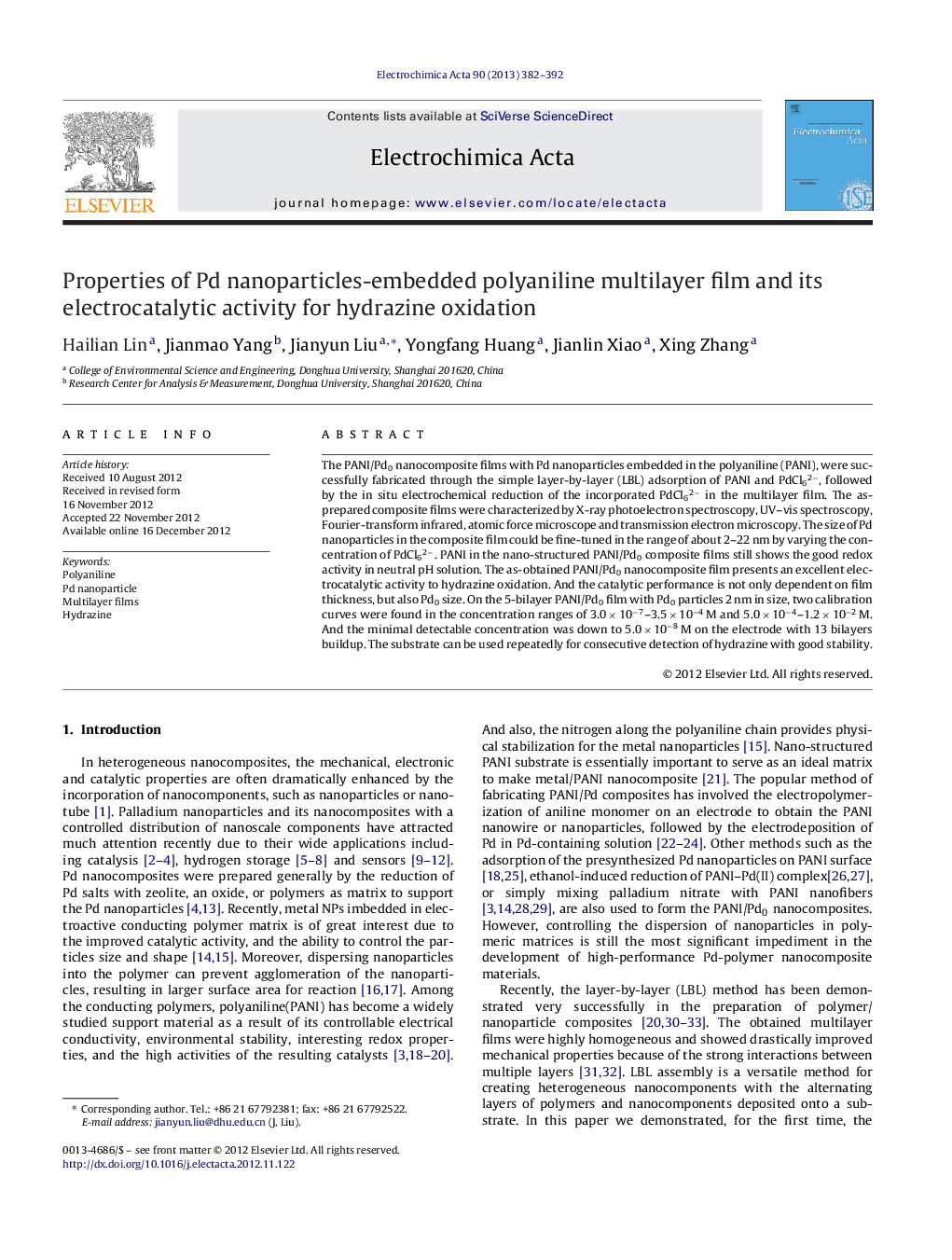| Article ID | Journal | Published Year | Pages | File Type |
|---|---|---|---|---|
| 187463 | Electrochimica Acta | 2013 | 11 Pages |
The PANI/Pd0 nanocomposite films with Pd nanoparticles embedded in the polyaniline (PANI), were successfully fabricated through the simple layer-by-layer (LBL) adsorption of PANI and PdCl62−, followed by the in situ electrochemical reduction of the incorporated PdCl62− in the multilayer film. The as-prepared composite films were characterized by X-ray photoelectron spectroscopy, UV–vis spectroscopy, Fourier-transform infrared, atomic force microscope and transmission electron microscopy. The size of Pd nanoparticles in the composite film could be fine-tuned in the range of about 2–22 nm by varying the concentration of PdCl62−. PANI in the nano-structured PANI/Pd0 composite films still shows the good redox activity in neutral pH solution. The as-obtained PANI/Pd0 nanocomposite film presents an excellent electrocatalytic activity to hydrazine oxidation. And the catalytic performance is not only dependent on film thickness, but also Pd0 size. On the 5-bilayer PANI/Pd0 film with Pd0 particles 2 nm in size, two calibration curves were found in the concentration ranges of 3.0 × 10−7–3.5 × 10−4 M and 5.0 × 10−4–1.2 × 10−2 M. And the minimal detectable concentration was down to 5.0 × 10−8 M on the electrode with 13 bilayers buildup. The substrate can be used repeatedly for consecutive detection of hydrazine with good stability.
► PANI–Pd nanocomposite film was prepared simply by self-assembly and in situ reduction. ► Pd nano size in the composite is fine-tunable. ► Complexation of PANI–Pd in the film was studied by CV, UV–vis, FTIR and XPS. ► High catalytic activity of the PANI–Pd film to hydrazine oxidation was obtained. ► The catalytic performance of the film to hydrazine oxidation is Pd nano-size-dependent and film thickness dependent.
